In addition to loving miles & points, I’m also a huge avgeek. When I fly, I want to know everything about the plane I’m traveling on. Not because I’m scared, but because some planes have really interesting histories. It’s amazing how many airlines some aircraft have flown for over the years.
For those who are curious about the age of planes, I figure it’s fun to share how I go about determining the age of the planes I’m flying on.
In this post:
How to determine the age of a plane by looking at it
Say you’re at the departure gate for your flight, and the aircraft is there. How can you tell how old it is? The key is to figure out the aircraft’s registration code, which is typically a five to six digit code (in some countries it has just letters, while in other countries it can have numbers too).
The full registration code of an aircraft can typically be found toward the back of the fuselage. For aircraft registered in the United States, this will always start with the letter “N.” For example, take the below American Airlines aircraft — if you look closely, you’ll see that the registration code is N835NN.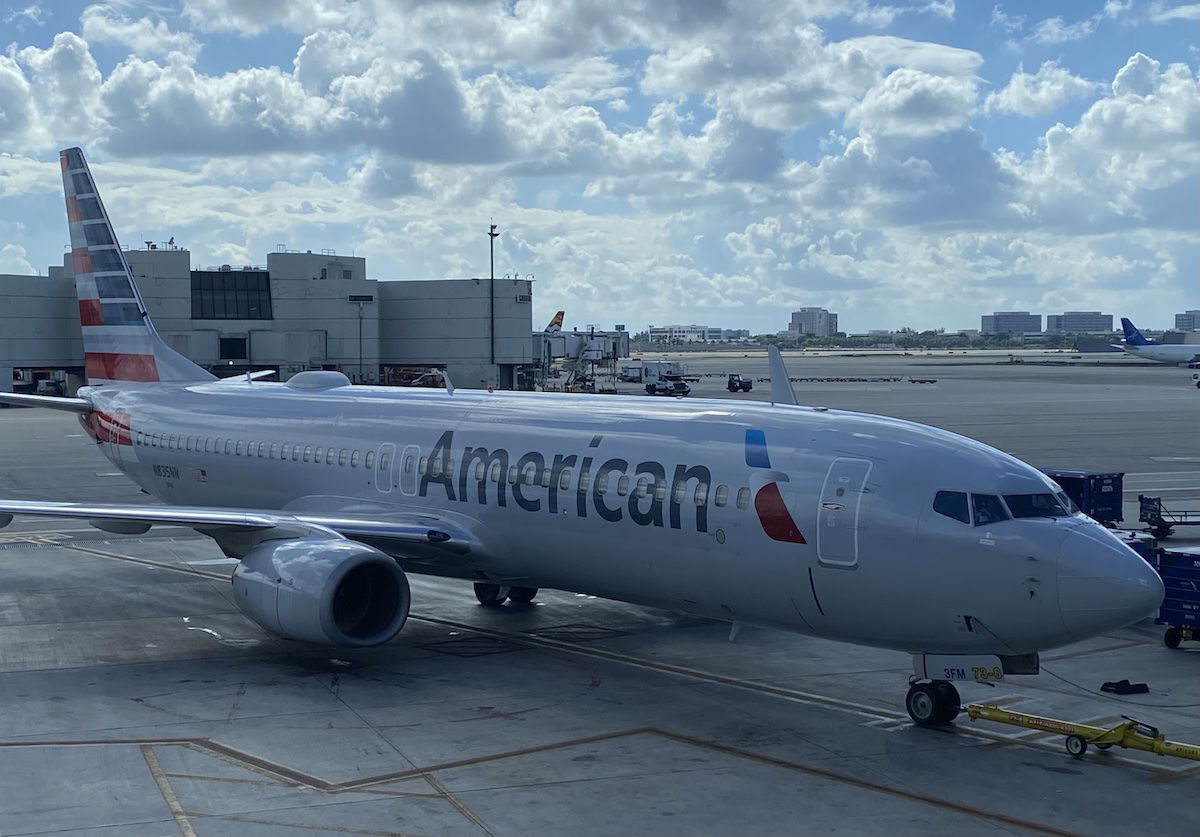
Once I have that information, I’d recommend Googling “[aircraft registration code] Airfleets” or “[aircraft registration code] Planespotters” with airfleets.com and planespotters.net being two awesome websites that track aircraft details. Here’s the page you’ll get if searching with airfleets.com — as you can see, this is a roughly 15 year old Boeing 737-800.
If you can’t easily see the registration code (because it’s at the back of the aircraft), sometimes there’s a clue closer to the nose. For example, take the below American Eagle aircraft. As you can see, it has the registration code N755SK. You’ll also see “755” written just below the cockpit window, so that’s a further clue. This plane is a roughly 20 year old SkyWest CRJ-700.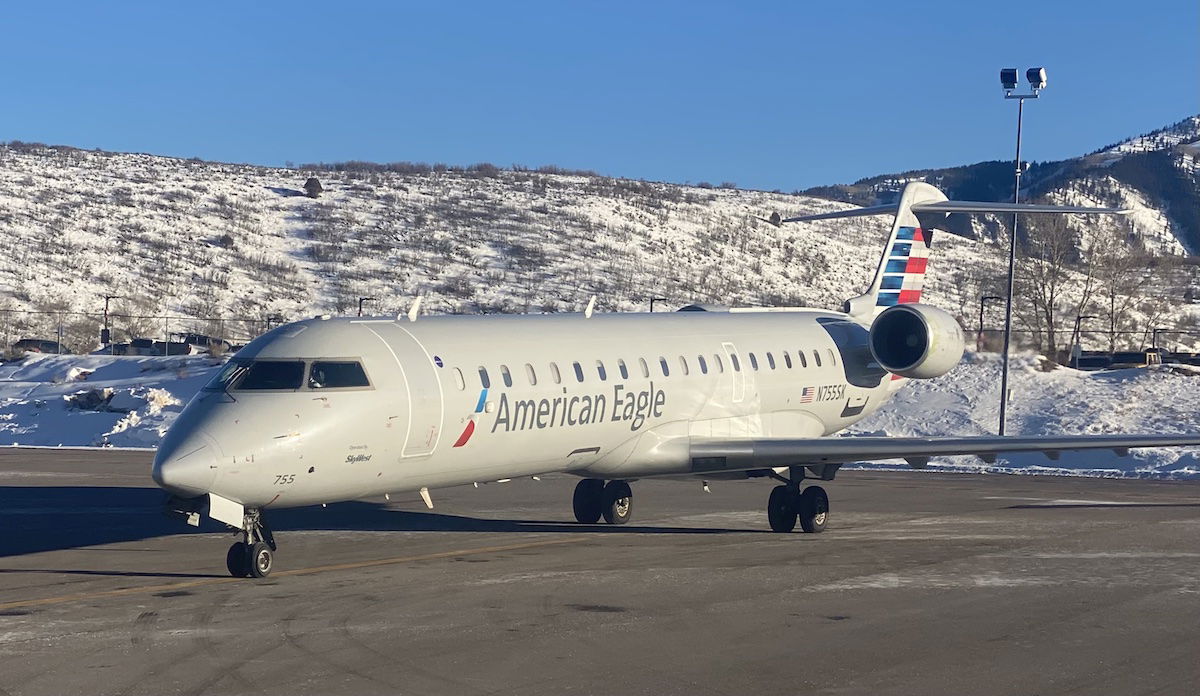
Sometimes there’s also a clue on the panel immediately above the forward wheels. For example, take the below JetBlue aircraft, which has the registration code N2016J. If you can’t quite make that out at the back of the aircraft, you’ll see “2016” written just above the forward wheel. Again, “N” is how all aircraft registrations in the United States start, and in this case “J” is always the last letter for JetBlue aircraft registrations. This plane is a roughly six year old JetBlue Airbus A321neo.
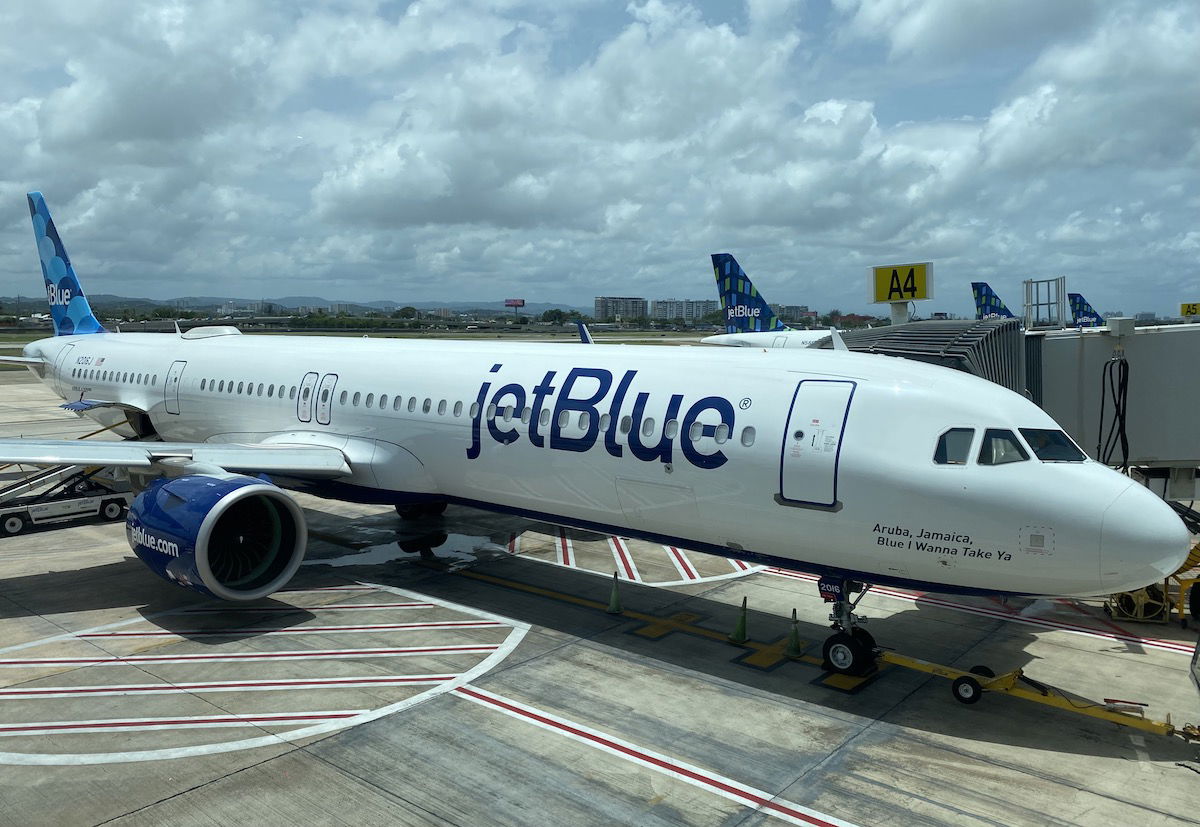
Just to give an example of a non-US registered plane, take the below Lufthansa aircraft, with the registration code D-ABYR (all planes registered in Germany start with “D”). This plane is a roughly 11 year old Boeing 747-8.
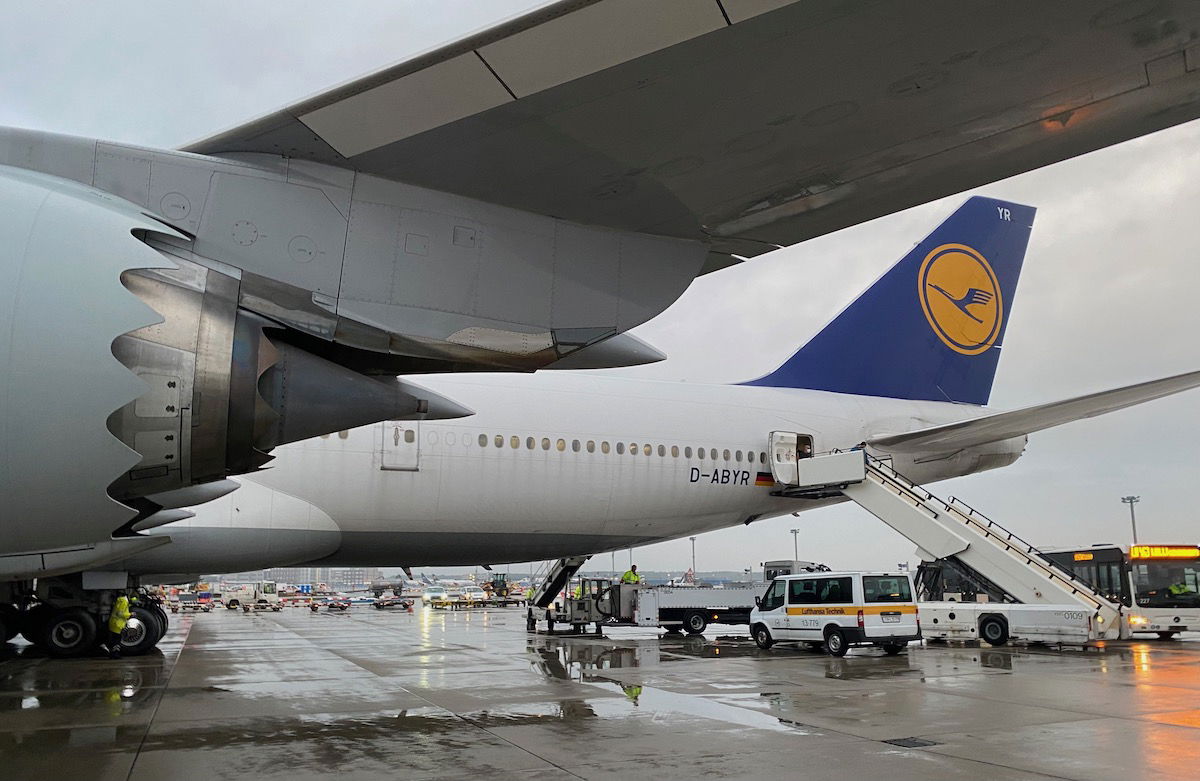
If you’re at a gate it’s not always possible to see the registration code, though, especially if the jet bridge is blocking it. Below is a picture I took of a Lufthansa 747-8 at Chicago O’Hare. Above the forward wheel I saw it said “YD.” Since registration codes are often sequential, I could assume that the registration code was D-ABYD (since all Lufthansa 747-8s start with “D-AB”).
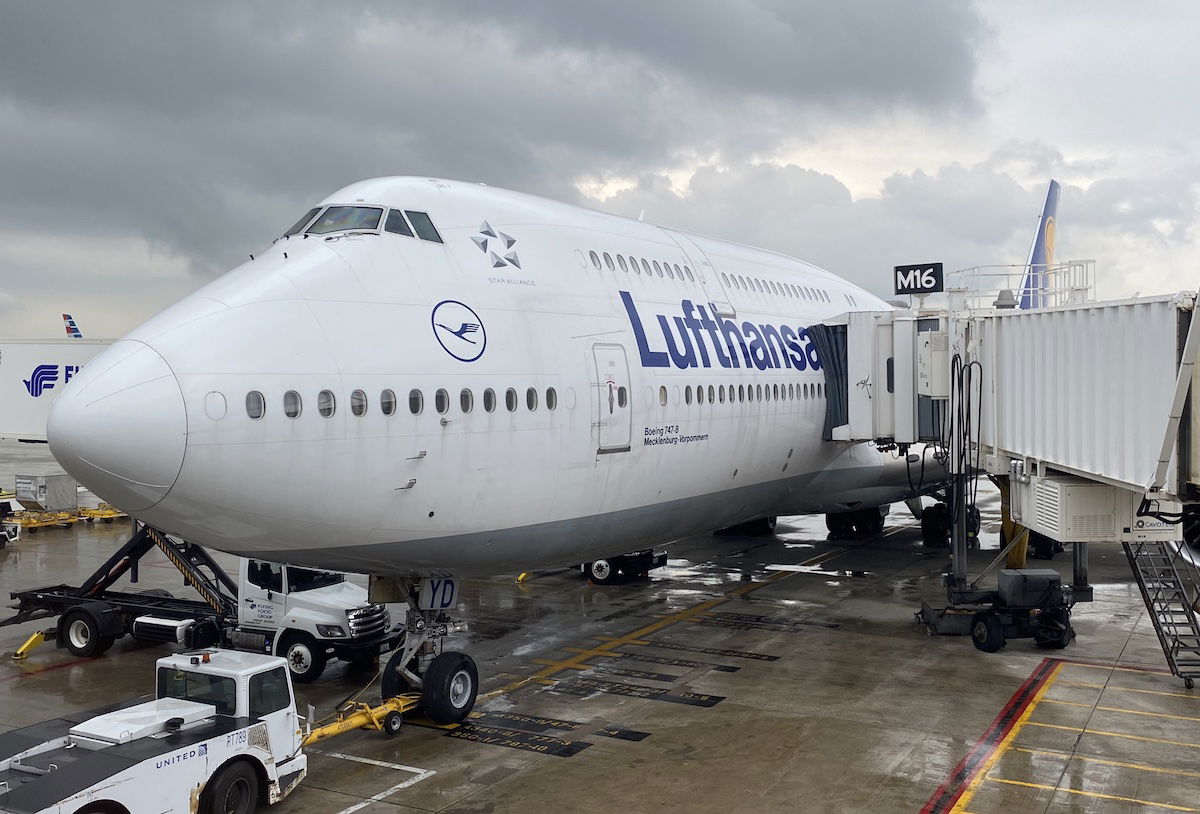
How to determine the age of a plane without looking at it
How do you determine in advance which aircraft is scheduled to operate your flight? While you can’t tell way in advance, you usually can tell day of departure by determining the registration code. How do you figure that out? It’s a two step process.
This will only work if you’re searching close to departure, since airlines typically don’t assign tail numbers until fairly close to departure, and that’s always subject to change anyway until the plane leaves.
Let’s say you’re flying later today from New York to London on American Airlines flight AA100. The easiest thing to do is to just Google “[flight number] Flightradar24.” So in this case I Googled “AA100 Flightradar24.” That should bring you to this page. There you’ll find the registration codes listed for the next two AA100 flights, with one departing today and one departing tomorrow. As you can see, for August 9 it’s expected that N732AN will operate that flight.
If you’re a paid Flightradar24 subscriber, then you can just click the registration code and you’ll see that this is a roughly 10 year old plane.

If you’re not a paid subscriber, you can then Google “[aircraft registration code] Airfleets,” as I recommended earlier. In this case I’d search N732AN, which would bring you to this page.
Why plane age doesn’t actually matter
As I mentioned at the start of this post, I like to keep an eye on this stuff because I’m an avgeek and I genuinely find it to be interesting.
To those who are concerned about the age of a plane, I just want to emphasize that age is just a number, and has very little impact on safety. There are a lot of other factors to consider, from the number of cycles, to maintenance practices, to pilot training, etc. Personally I think people just shouldn’t worry about airline safety, but if you are concerned, age of aircraft isn’t what you should be focused on.
There are planes with interesting histories
Admittedly the aircraft I’ve used in the above examples don’t have especially exciting histories, as they’re mostly from airlines that are known for buying new aircraft. However, at times aircraft histories can get very interesting. Let me give a couple of examples.
Belarusian national carrier Belavia recently smuggled a few Airbus A330-200s into the country. One of those has the registration code EW-588PD, and that plane has been flying for around 23 years, with quite the history.
If you want to take a look at an extreme example, there’s the Nolinor Boeing 737-200 that’s still in service with the registration code C-GNLK. The plane has been flying for over 51 years, and has flown for everything from Transavia, to Saudia, to Aerolineas Argentinas, to Air Florida. The things that plane must’ve seen!
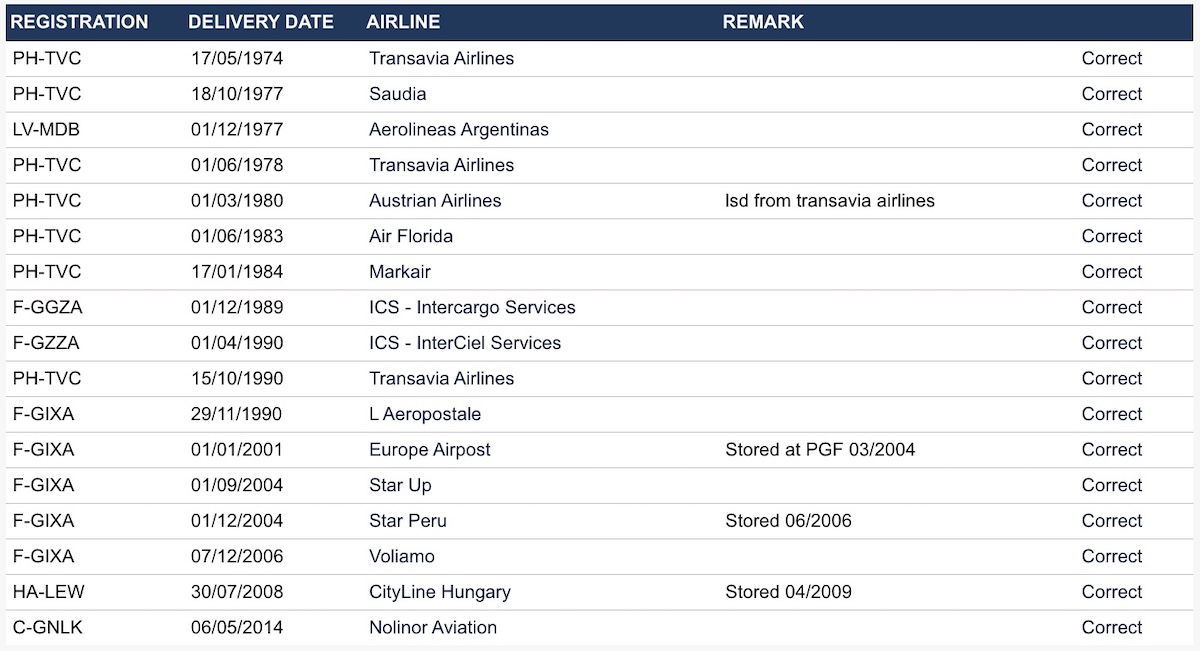
Bottom line
It’s not too hard to tell the age of the airplane you’re flying on. The trick is to figure out the registration code of the airplane, and then go to airfleets.com to look up when it was produced. It can also be fun to see if the plane has flown for any other airlines in the past, as some planes have pretty global histories.
I just want to once again emphasize that aircraft age as such shouldn’t matter. If you’re a nervous flyer, don’t assume that a new plane is safe and that an old plane is dangerous. While we’re talking about avgeeky things, here’s a post about how to tell airplanes apart.
Anyone else enjoy looking up the age and history of planes they’re flying on?





Flighty is always helpful for this but I also like the feature where they tell you if you've flown on the aircraft before. I always find it interesting to be on the same aircraft multiple times, especially narrowbodies given how many there are in US airline fleets. Doesn't matter in the least but an interesting occurrence (and maybe indicator of how often you fly).
Or, just look at Flighty
IMO the most interesting cases are when an airline has a fleet of a given aircraft including some examples that are very old and very new. E.g. UA's oldest 777s are >25 years old while the newest are a little over 5 years old
IMO the most interesting cases are when an airline has a fleet of a given aircraft including some examples that are very old and very new. E.g. UA's oldest 777s are >25 years old while the newest are a little over 5 years old
just to be clear, among US airlines, United has the oldest mainline average fleet age while Frontier has one of the youngest.
and while people fixate on aircraft age, fuel efficiency is a bigger indicator of how new the technology is on an airline's fleet.
among the big 3, DL has the most fuel-efficient widebody and overall fleet (including regional jets) while the ULCCs have higher percentages of new generation powered aircraft.
Not Delta AGAIN... who cares
"while people fixate on aircraft age, fuel efficiency is a bigger indicator"
Well people fixate on age because the topic is literally "The Age Of The Plane You’re Flying On"
Tim, and all your alter ego (especially your BA idiot), focus more on the topic and less on fluff or irrelevant things.
So nobody cares about fuel efficiency in this post.
“Focus more on the topic and less on fluff or irrelevant things”.
Eskimo …. You hypocrite, you are one of the worst “Fluff or irrelevant things” poster on this website …. Kettle and calling the pot black, really does apply to you bro.
Ben is correct that age really does not matter but, for those who care about the environment, fuel efficiency does.
UA has the oldest fleet among large US carriers; even though its fleet is slightly younger than DL and UA, AA doesn't have a fuel efficiency advantage even for mainline because most of their massive fleet replacements before covid were done w/ previous generation aircraft.
and AA and UA both operate higher percentages of...
Ben is correct that age really does not matter but, for those who care about the environment, fuel efficiency does.
UA has the oldest fleet among large US carriers; even though its fleet is slightly younger than DL and UA, AA doesn't have a fuel efficiency advantage even for mainline because most of their massive fleet replacements before covid were done w/ previous generation aircraft.
and AA and UA both operate higher percentages of regional jets which are less fuel efficient.
Fleet age doesn't matter - but they do for fuel efficiency which matters to some people because of environmental impact.
DL does have the most fuel efficient widebody fleet because fuel efficiency matters the most on longer routes.
If a new aircraft has new and improved safety features does that mean an older version of that aircraft is less safe? Take a peek inside the cockpit of an AA 321neo and then look inside a legacy America West A320. It’s like comparing an iPhone 10 with an iPhone 16. Even a non-pilot would notice the difference between the CRTs in the old buses versus the displays in the newer ones. Throw in better...
If a new aircraft has new and improved safety features does that mean an older version of that aircraft is less safe? Take a peek inside the cockpit of an AA 321neo and then look inside a legacy America West A320. It’s like comparing an iPhone 10 with an iPhone 16. Even a non-pilot would notice the difference between the CRTs in the old buses versus the displays in the newer ones. Throw in better weather radar, a better wing, more powerful engines and other improvements and operationally you have a better aircraft. Does being a newer, updated, aircraft make it a safer aircraft? It does to me.
Sweet! D-ABYR was the 748 on my first F award.
Be careful what you wish for. I once looked up the Aer Lingus aircraft I was about to board for a SFO to DUB flight. Google showed me a photo of the plane on fire in Orlando a couple of years earlier.
Airbus airplanes (all or most? I'm not sure) have a data plate or nameplate with basic information (model type, serial number, production month/year, etc.) on the aircraft's fuselage right next to front door. As you board, you can see it to your left and find out the airplane's age.
Am I the only one who gets nervous when I'm riding an older aircraft that spends most of its time doing short puddle jumps between nearby locations? I experienced this a lot when I did a lot of traveling in Africa. For instance, I would fly from Lagos, Nigeria to Abuja (the capital) on very old aircraft - a trip they would do four or five times a day. The leap of faith for me...
Am I the only one who gets nervous when I'm riding an older aircraft that spends most of its time doing short puddle jumps between nearby locations? I experienced this a lot when I did a lot of traveling in Africa. For instance, I would fly from Lagos, Nigeria to Abuja (the capital) on very old aircraft - a trip they would do four or five times a day. The leap of faith for me was believing that these planes were maintained properly and that the constant takeoff/landing cycles would not just cause undue wear/strain.
Now I live in Hawaii and fly aircraft that hop from island to island several times a day. Some of those landings are not easy, and turnaround is quick with just a basic once-over on the plane's mechanics and structure. The planes may be newer, but the fear is still there.
The maintenance of the aircraft is all I care about. I've worked on cars since I was a teenager and got to help out with small planes my dad and his buddies worked on at their FBO. If the mechanics of any vehicle are sound and the maintenance is routine, there's little to worry about. If s**t happens, it happens.
Same reason I would never rent an Audi (my daily driver) for a long...
The maintenance of the aircraft is all I care about. I've worked on cars since I was a teenager and got to help out with small planes my dad and his buddies worked on at their FBO. If the mechanics of any vehicle are sound and the maintenance is routine, there's little to worry about. If s**t happens, it happens.
Same reason I would never rent an Audi (my daily driver) for a long road trip. I go for Hondas or Toyotas. Complete workhorses and if there's a failure, easy to fix... as long as the vehicle has been maintained properly. I put 280k on a 1994 Honda Accord in college before I sold it to move abroad. Buyer told me he planned to take it to 400k.
Years ago I asked a former captain who was sitting next me how old the plane was. He jokingly said it depends on the number of wrinkles on the fuselage.
"Delta has lots of old & well maintained planes"
Well, Lucky, have you been on one of their "well-maintained" 767's recently?
I have, on a SFO to JFK RT flight: cabin is tired in appearance, while the lavatories are literally duck taped in place.
Some of these planes are +35 years old.
No thanks!
I just did JFK-SFO on a 36 year old DL 767 and it was very tired on the inside. Walking back to my seat in economy i actually felt relived that I didn’t pay for business class because the seats looks really bad by today’s standards.
Let me add here that most countries follow a typical series-based registration scheme, where the first few letters/digits — or, in the case of Japan, the one- or two-letter suffix — determine the airline and aircraft type.
But not all countries do so. South Korea (HL), Ethiopia (ET), Egypt (SU) and Spain (EC) are some countries where the registration is determined by when the aircraft was delivered to the airline or built, and not by...
Let me add here that most countries follow a typical series-based registration scheme, where the first few letters/digits — or, in the case of Japan, the one- or two-letter suffix — determine the airline and aircraft type.
But not all countries do so. South Korea (HL), Ethiopia (ET), Egypt (SU) and Spain (EC) are some countries where the registration is determined by when the aircraft was delivered to the airline or built, and not by the airline or aircraft type. For example, in South Korea, HL8500–8502 are T’way Air A330-300s, HL8505/06/09 are Korean Air A321neos and HL8507 is an Eastar Jet 737-800. And while the A321neos are fairly new, the others were built in 2009/10.
This is in great contrast to most countries, where you can say for sure that the 9V-SK series is definitely for Singapore Airlines A380s, and the JA__WJ series is definitely for Japan Airlines A350-1000s. Confusing, right?! Not so much, when you consider that all those aircraft in the HL85xx series were delivered to those airlines at similar times in 2022. Similarly, in Spain, aircraft in the EC-N and EC-O series were delivered much more recently than those in the EC-K and EC-L series.
So you can roughly guess the age of a South Korean or a Spanish aircraft from the registration!
While you're guessing age VT-CIE, "visualise yourself flying Qsuites or Air France or JAL or something of that kind! ;)"
Cut it with this ancient grudge
@quorumcall
Are you talking about the land of Palestine?
Guess who said "my username is an ordinary, no-frills Air India A320neo, and not a luxurious A380 or something, because international travel can sometimes consist of very non-glamorous products and it’s your choice to accept them or not."
I thought the age of an aircraft didn't matter to you?
Oh wait, it's Korean Air.
Understandable ;)
Because you should "visualise yourself flying Qsuites or Air France or JAL or something of that kind! ;)"...
Guess who said "my username is an ordinary, no-frills Air India A320neo, and not a luxurious A380 or something, because international travel can sometimes consist of very non-glamorous products and it’s your choice to accept them or not."
I thought the age of an aircraft didn't matter to you?
Oh wait, it's Korean Air.
Understandable ;)
Because you should "visualise yourself flying Qsuites or Air France or JAL or something of that kind! ;)" regardless of the aircraft age.
The young age didn’t help two specific 737 Max 8, with registration PK-LQP and ET-AVJ.
But if FAA wasn't in bed with Boeing, ET-AVJ could have a much longer life.
So does hundreds more, if humans wasn't behind the controls.
Eskimo, you keep prattling on about “Humans” being replaced by AI …. Is that your mantra? Are you actually an AI Bot who has to repeat things in order to concentrate?
I have many years of records but the data as a kid is fragmentation. Da tree a from 2000 is very good and since 2015 is even more detailed.
I have been aboard one of the plane that was hijacked on September 11th. I have seen the wreckage of an airliner. I saw a plane that was previously damaged
Er, all four hijacked on 9/11 crashed?
Maybe he flew on one of them before 9/11?
For Lufthansa, the registrations follow a pattern. The D-A is stipulated by the regulator, with the D for Germany (Deutschland in German) and the A denoting an MTOW above 20t. Registrations starting with D-AB denote Boeing mainline aircraft, while D-AI is for Airbus mainline jets. Lufthansa Cargo planes start with D-AL, while Cityline aircraft registrations start with D-AC.
The fourth letter is assigned to an aircraft type, e.g. all 747-8s start with D-ABY. The...
For Lufthansa, the registrations follow a pattern. The D-A is stipulated by the regulator, with the D for Germany (Deutschland in German) and the A denoting an MTOW above 20t. Registrations starting with D-AB denote Boeing mainline aircraft, while D-AI is for Airbus mainline jets. Lufthansa Cargo planes start with D-AL, while Cityline aircraft registrations start with D-AC.
The fourth letter is assigned to an aircraft type, e.g. all 747-8s start with D-ABY. The last letter is typically assigned sequentially as aircraft enter service, so the first 747-8 most likely had D-ABYA as its registration.
LH can do that because Germany doesn't have many planes. In the US, sometimes a private plane uses a code so an airline can't. I think the first Alaska Airlines 737-900, not 900ER, was N302AS because a private plane had 301
Modern airlines are designed to fly commercially for 30-35 years. As the brand new AA 789s have shown a new plane can still get you stranded. A lot depends upon the upkeep of the plane. Airlines have gotten much better with operational dispatch reliability even with 25 year+ planes. I remember the A300 and 767 days of AA when you probably had a good 50% chance your a/c was going to have a maintenance issue. Those days seem to have be gone.
Honestly speaking, as an avgeek, I never really cared for the age and history of the aircraft. I care more about the type and cabin I'm flying on. When Cathay's 747s and A340s were on its last legs, I tried to book myself on every flight that I could.
Cathay's 773s (non-ER) are about 20 years old, but the cabin still looks modern. You might not like recliners in 7-ab, but it still offers the essentials from a TV, to Wi-Fi and USB charging. Likewise with some A330s.